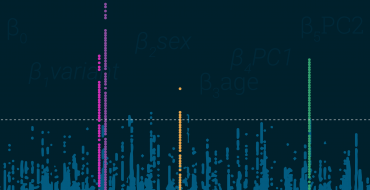Parkinson’s Disease Genetics: Cause, Risk, or Protection?

June 1996, Imperial Palace, Vienna – the venue of the Annual World Congress of the International Parkinson and Movement Disorder Society. Professor L. Golbe presents photographs of the beautiful Campania region in Southern Italy to an astounded audience, where he and his colleagues have just identified a large pedigree with numerous members afflicted with Parkinson’s disease (PD) – the so-called “Contursi kindred”. At a time when Parkinson’s disease was mostly viewed as a textbook example of an environmentally caused disease, the idea of Parkinson’s being genetic in origin was simply revolutionary. And for me, attending my very first international congress, it became clear that it was the genetic underpinnings of Parkinson’s disease that I would like to help unravel in my future career.
In quick succession, the first genes were identified for dominantly and recessively inherited forms of Parkinson’s; Alpha-Synuclein in the Contursi kindred in 1997, and Parkin in families with very young onset disease in Japan just one year later. This was followed by the discovery of additional well-established genes that can cause PD when mutated (LRRK2, VPS35, PINK1, DJ-1), as well as of a number of additional candidate genes that currently await further confirmation.
A key development is the identification of genetic factors of much smaller effect size that increase the risk of developing Parkinson’s but are not causative per se. Of these, rare pathogenic variants in the GBA gene confer the strongest known risk. Intriguingly, common genetic variants increasing the risk for PD were also found in genes that had previously been found to cause Parkinson’s when harboring rare deleterious mutations – the most prominent example being the Alpha-Synuclein gene. The field has since moved from assessing single-gene risk variants to establishing polygenic risk scores, with the most recent ones encompassing close to 2,000 individual genetic variants, which can then be used to group Parkinson’s patients into “risk quartiles” ranging from higher to lower genetic risk groups.
All currently known PD genes have been found in various populations around the globe, however, some occur at highly variable and population-specific frequencies. The most striking example is the p.G2019S mutation in the LRRK2 gene. In addition, it is conceivable that population-specific hereditary forms of PD may exist, as exemplified by X-linked dystonia-parkinsonism, a condition exclusively present in patients of Filipino ancestry, for which both the underlying genetic cause has been identified, as well as genetic age-at-onset modifiers.
Genetics has answered many questions in terms of PD pathophysiology, and the first gene-targeted treatments are being tested in clinical trials as we speak. However, we are still left with many as yet unresolved issues. To me, one of the most intriguing of these conundra is the phenomenon of reduced penetrance. It has been well documented, especially in dominantly inherited PD, that a fraction of mutation carriers remains free of the disease or develops first signs only very late in life. Elucidating and, if possible, enhancing such (genetic) factors of endogenous disease protection is another exciting opportunity in the field of PD in the years to come and for which GP2 provides the ideal research environment.




